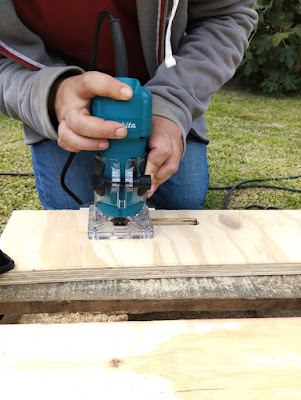🔨 Is it worth starting a woodworking project if you don’t have a workshop or professional tools?
The short answer is: yes, absolutely.
And if you want a slightly longer answer… stick around, because this post is for you.
When I first got into woodworking, I thought I needed it all: power tools, a solid workbench, a proper space, perfect order… the whole package.
Spoiler: I couldn’t have been more wrong.
Before even starting my first real project, I bought all the power tools I could afford (minus the big benchtop machines — those were out of budget).
I already had two routers at home… and hadn’t even cut a single board yet! 😅
I remember it clearly: the tools made me feel confident, like they would make up for my lack of experience. But that illusion disappeared quickly when I realized I didn’t even have a workbench, or a fixed space to work in — not even a proper way to hold a piece of wood in place.
I still work in my backyard.
When the project is small, I use a couple of plastic garden tables.
And when it’s time to cut something bigger, I go down to the grass with a pallet underneath so the saw doesn’t dig into the dirt.
That’s how improvised — and how real — it is.
That’s when I learned something important:
The most common mistake when starting out is focusing too much on the tools.
You think: “If I don’t have a table saw, a planer, or a jointer, I can’t do anything…”
But the truth is: all you really need is to start with what you have, even if that’s not much.
What matters isn’t having everything — it’s knowing how to make the most of what you’ve got.
And learning how to do that teaches you more than any course ever could.
That’s why I created WoodBench, and that’s why I share what I share:
✅ Ideas to build projects without a full workshop.
✅ Tips for working in small spaces.
✅ Tricks to stay motivated when things don’t turn out perfect (spoiler: they rarely do).
💬 Now I want to hear from you:
Where do you work when you don’t have a workshop?
What was your first improvised project?
What would you like to learn to get started (or improve) your DIY projects?
Along with this post, I’m sharing some real photos from when I started out.
No perfect Instagram setups — just the honest truth of how we learn: by messing up, testing, and creating.
Thanks for being here.
If you’re thinking about starting, don’t hold back.
And if you’ve already started, keep building — the workshop can wait. What matters is that you don’t stop.
Síguenos en nuestras redes sociales:
Facebook | Instagram


Comments
Post a Comment